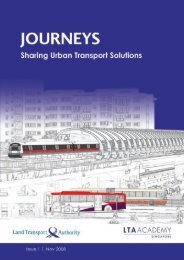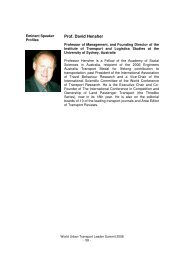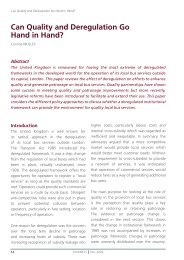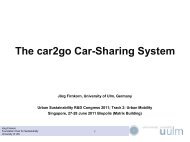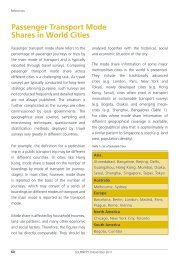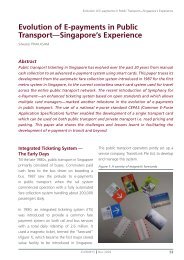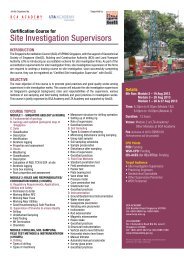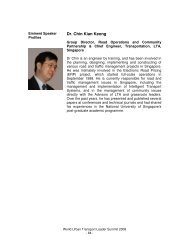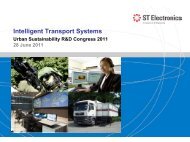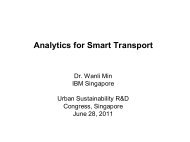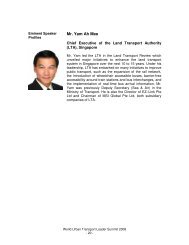journeys - LTA Academy - Land Transport Authority
journeys - LTA Academy - Land Transport Authority
journeys - LTA Academy - Land Transport Authority
You also want an ePaper? Increase the reach of your titles
YUMPU automatically turns print PDFs into web optimized ePapers that Google loves.
Frequency and Connectivity | David HENSHER<br />
The so-called natural evolution from a bus in mixed traffi c to heavy rail in<br />
terms of passenger capacity per hour (sitting and standing) is no longer strictly<br />
valid. BRT systems such as the TransMilenio have shown that a BRT system can,<br />
if appropriately confi gured, carry more passengers per hour than many rail<br />
systems. The main trunk corridor in Bogota has maximum peak ridership of<br />
35,000 passengers per hour per direction with recent claims of up to 45,000<br />
passengers with maximum peak headways of 3 minutes (5 minute off-peak<br />
headways), average station dwell time of 25 seconds, with articulated buses<br />
having a carrying capacity of 160 passengers and off-vehicle smartcard fare<br />
payment. Curitiba, the forerunner to Bogota, has a maximum peak ridership of<br />
20,000 passengers per hour per direction. This compares to the busiest rail line<br />
in Sydney, for example, of 14,000 passengers per hour per direction. In general<br />
Hidalgo (2005) states “There is a range, between 20,000 and 40,000 passengers<br />
per hour per direction, in which Metros and HBRT 1 are able to provide similar<br />
capacity. Nevertheless, there are large differences in initial costs: US$5-20 million<br />
per kilometre for HBRT, US$30-160 million per kilometre for Metros”.<br />
Figure 2 shows the peak ridership for 26 systems for which data is available.<br />
The 4 South American systems in Bogota, Sao Paulo, Porto Alegre and Curitiba<br />
have peak ridership of 20,000 or more passengers per hour per direction. This<br />
declines to 12,000 for Seoul, with the majority of systems in the range of 2,000<br />
to 8,000 passengers per hour per direction.<br />
Figure 2: Peak ridership of BRT systems (2006)<br />
30 JOURNEYS | Nov 2008



